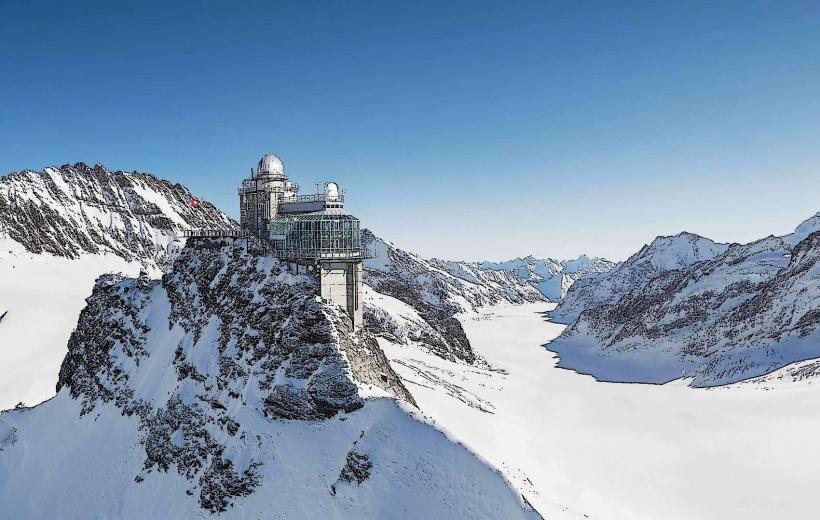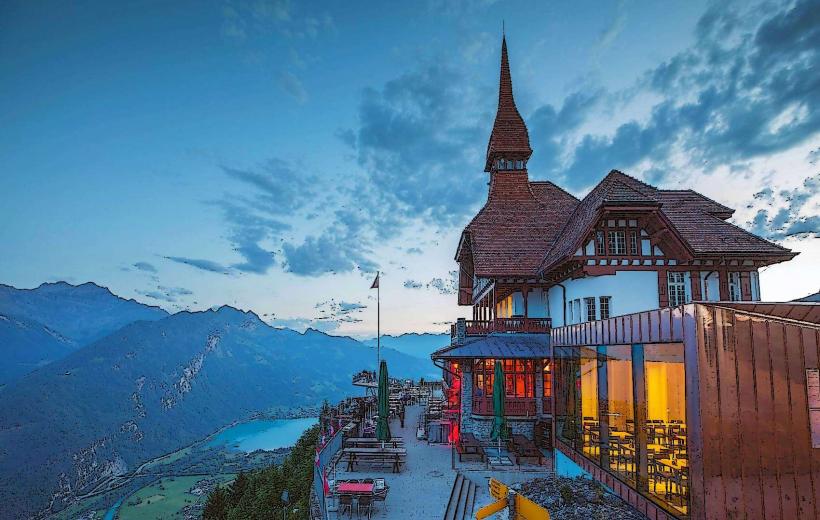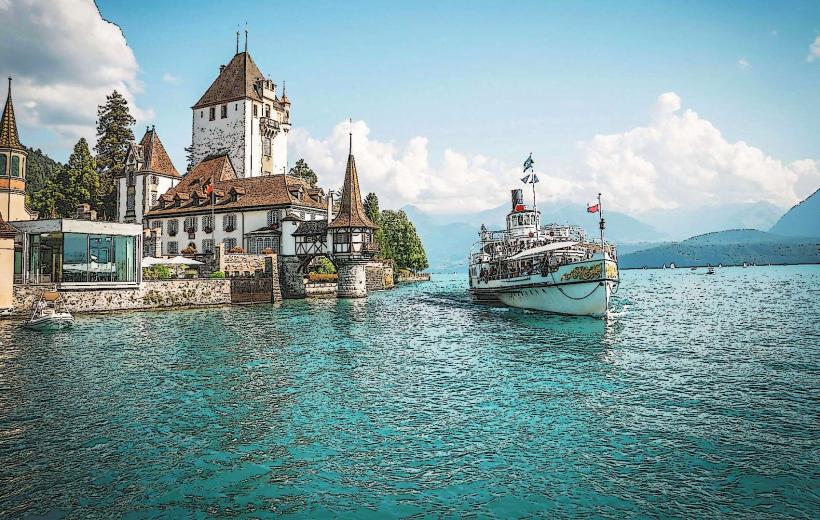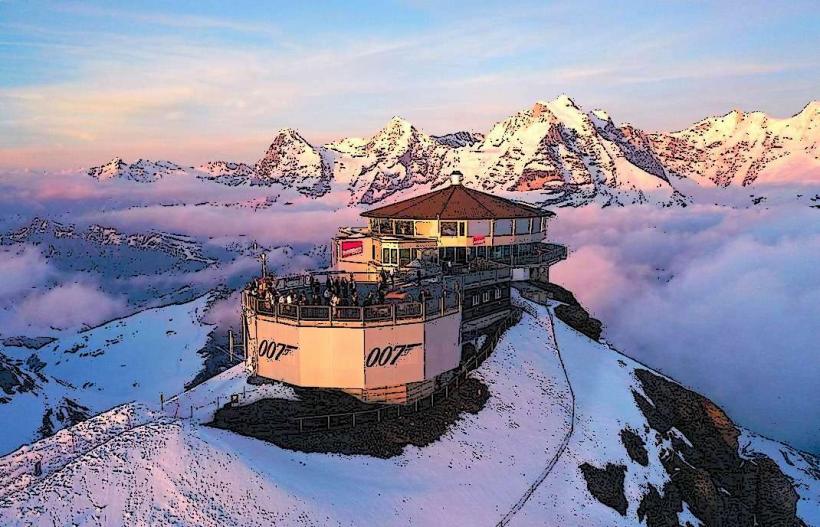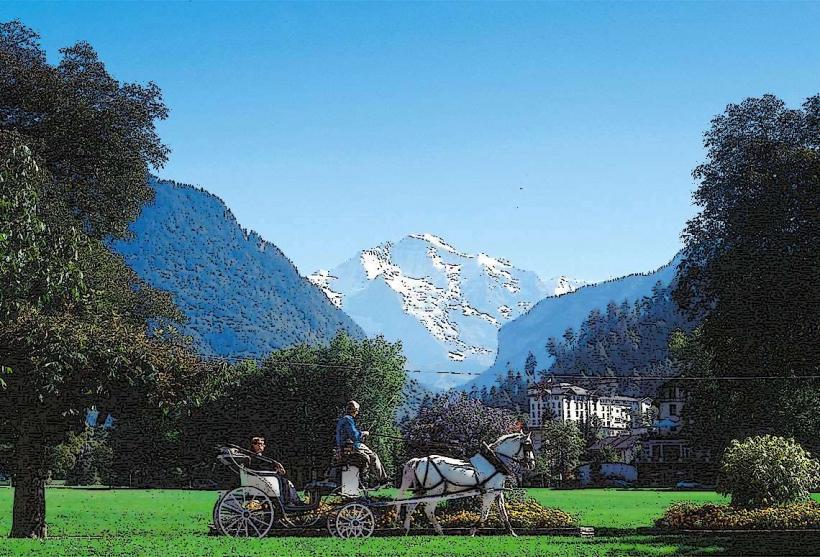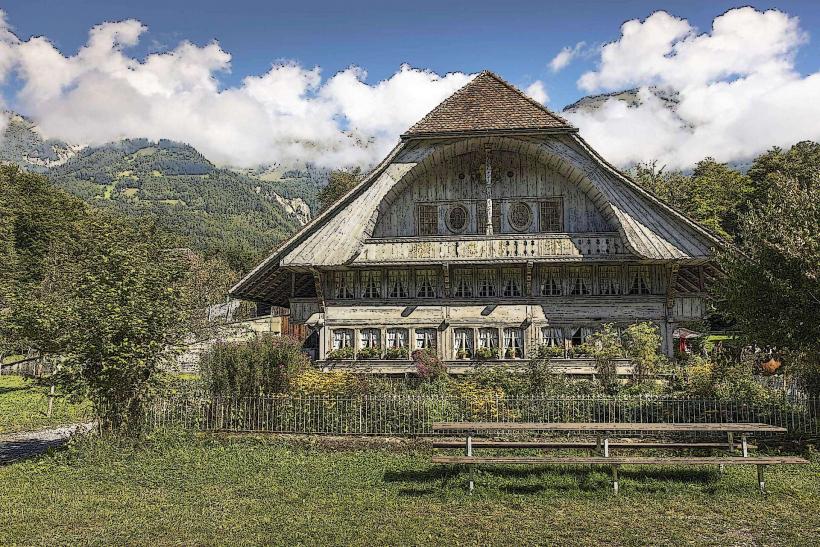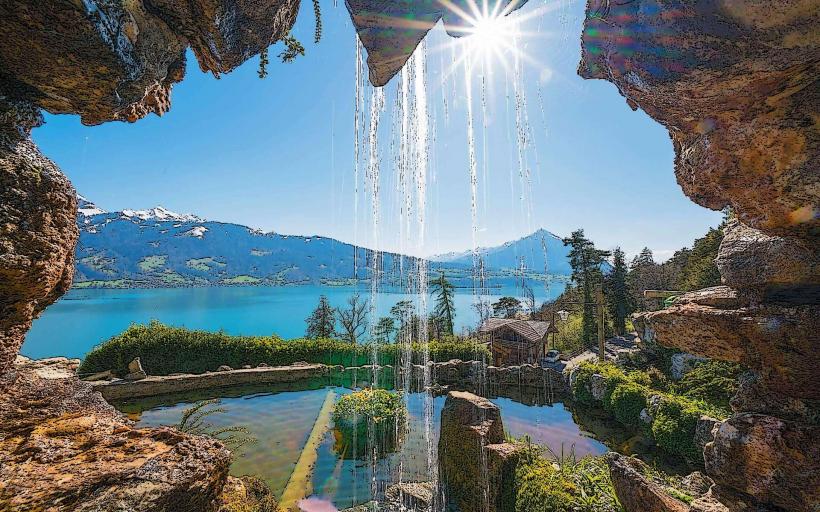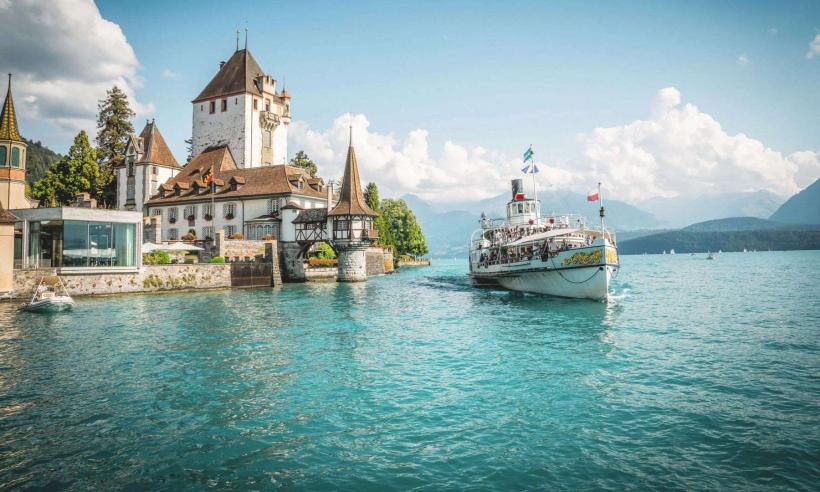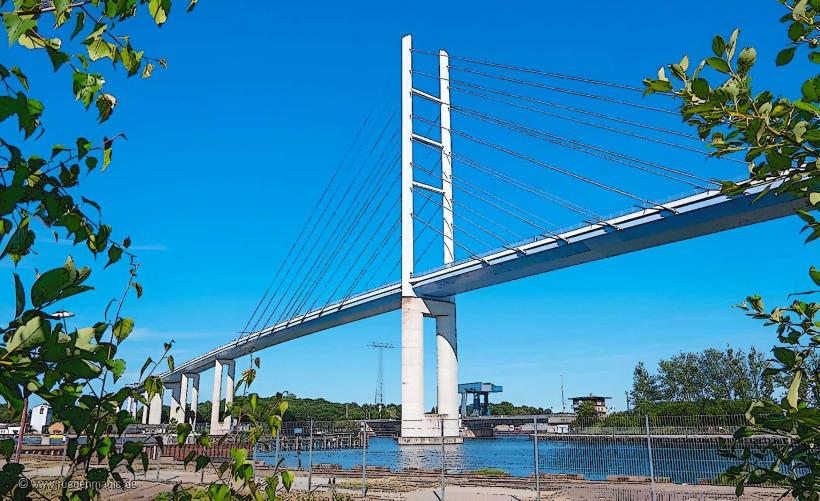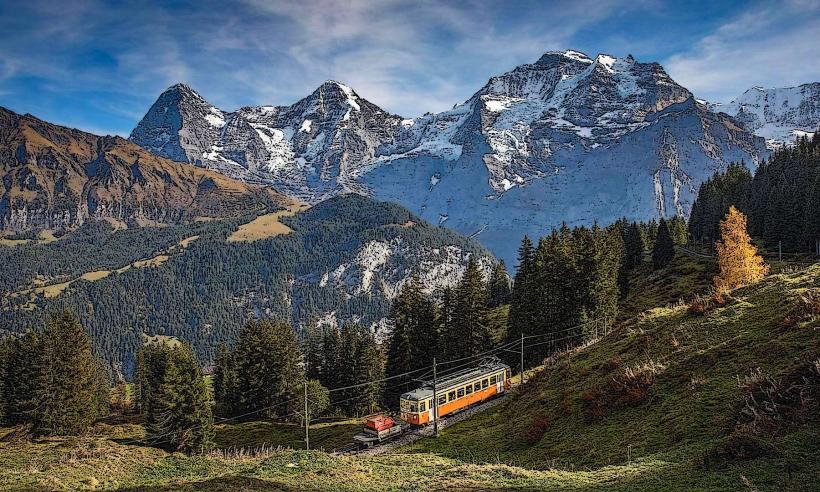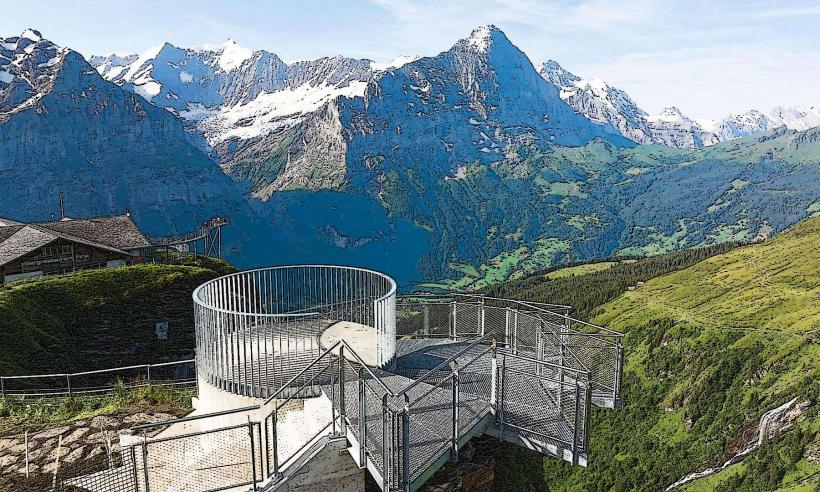Information
Landmark: Eiger MountainCity: Interlaken
Country: Switzerland
Continent: Europe
Eiger Mountain is one of Switzerland's most iconic and famous peaks, located in the Bernese Alps in the central Swiss region. Standing at an impressive height of 3,967 meters (13,015 feet), the Eiger is known for its steep north face, its challenging climbs, and its stunning panoramic views of the surrounding mountains and valleys. It is part of the Eiger-Mönch-Jungfrau massif, which includes two other notable peaks, the Mönch and Jungfrau.
Key Features of Eiger Mountain
Geography and Location
- The Eiger is located near the town of Grindelwald in the Bernese Oberland region of Switzerland. It is part of the larger Eiger-Mönch-Jungfrau range, which dominates the view from the towns of Grindelwald, Interlaken, and Lauterbrunnen.
- The Eiger is situated between the Aare River to the west and the Valley of Grindelwald to the east, making it a prominent landmark visible from many parts of the region.
The Eiger’s North Face
- The north face of the Eiger is one of the most famous and feared mountain faces in the world. Standing at over 1,800 meters (5,900 feet) of vertical rock and ice, it has long been considered one of the most difficult climbs in the mountaineering world.
- The north face is notorious for its technical difficulty and the dangerous conditions that climbers face, including falling rocks, avalanche risk, and rapidly changing weather conditions. It is often referred to as the "Murder Wall" due to the numerous fatalities that have occurred during attempted ascents.
- The first successful ascent of the north face was made in 1938 by a German-Austrian team, but many attempts before and after that resulted in failure or loss of life, adding to the legend of the Eiger.
Climbing the Eiger
- While the north face remains one of the most difficult climbs, the Eiger is also popular among climbers who prefer less challenging routes, particularly those on the south and east faces. Many mountaineers and tourists attempt the summit via less technical paths, though it remains a challenge at any level.
- Climbers who aim for the north face must be highly experienced and prepared for the harsh conditions, and many are assisted by guides and advanced climbing techniques. However, due to the unpredictable weather and the technical nature of the climb, even seasoned mountaineers face great risks.
The Jungfraujoch and the Eiger Glacier
- The Jungfraujoch, known as the “Top of Europe,” is a popular tourist destination that sits near the Eiger, between the Eiger and Mönch peaks. It offers one of the highest railway stations in Europe and provides stunning views of the surrounding glaciers, including the Eiger Glacier.
- The Eiger Glacier, located on the northern side of the Eiger, is another major feature of the mountain. It is a glacial system that has carved much of the valley below the Eiger, and visitors can enjoy spectacular views of the glacier from nearby trails and viewpoints.
Tourism and Accessibility
- While the north face is a challenge for professional climbers, the Eiger offers plenty of opportunities for tourists and mountaineers of all levels to experience the mountain and its surroundings. The mountain is part of a popular tourist circuit, and there are several hiking trails and cable car routes in the area that allow visitors to enjoy the views and the natural beauty of the region.
- The Eiger Trail, a hiking path that runs from the Jungfraujoch to Grindelwald, offers hikers a chance to see the mountain up close. The trail provides stunning views of the north face and allows visitors to experience the alpine environment of the area.
- For those less inclined to hike, the Eiger Express cable car offers easy access to the Jungfraujoch area, with panoramic views of the mountain and surrounding landscape.
The Eiger in Popular Culture
- The Eiger's legendary status as a challenging climb has earned it a place in mountaineering folklore and popular culture. It has been the subject of numerous books, documentaries, and films, including the famous 1975 film The Eiger Sanction, which features the mountain’s perilous climbs.
- The Eiger’s history of failed attempts and successful ascents has contributed to its status as a symbol of adventure, perseverance, and human struggle against nature.
The Eiger Railway
- The Eiger is also accessible via the Eiger Railway, which is part of the Jungfrau Railway system. This railway, which ascends through tunnels inside the mountain, offers tourists a safe and efficient way to reach the Jungfraujoch, known as the "Top of Europe".
- The journey through the tunnels of the Eiger offers spectacular views of the Eiger Glacier and surrounding peaks. Passengers can also stop at the Eismeer Station, which offers panoramic views of the north face and the Eiger Glacier.
Weather and Conditions
- The Eiger, like many high-altitude mountains, is subject to rapidly changing weather conditions, which can make climbing or hiking treacherous. The mountain is often shrouded in clouds, and its summit can be hidden for much of the year. Even in the summer months, weather conditions can be unpredictable, with temperatures plunging below freezing at high altitudes.
- Visitors and climbers should always check the weather conditions before venturing onto the mountain or attempting an ascent.
Conclusion
Eiger Mountain is a symbol of Swiss mountaineering, offering both challenges for climbers and a breathtaking experience for tourists. Its steep north face is famous for its technical difficulty and rich history of mountaineering, while the mountain’s surroundings offer numerous hiking opportunities and stunning panoramic views. The Jungfraujoch and Eiger Glacier add to the mountain’s allure, making it a must-see for visitors to the Bernese Oberland region. Whether you’re an experienced climber or a casual tourist, the Eiger offers a majestic and unforgettable experience in the heart of the Swiss Alps.

